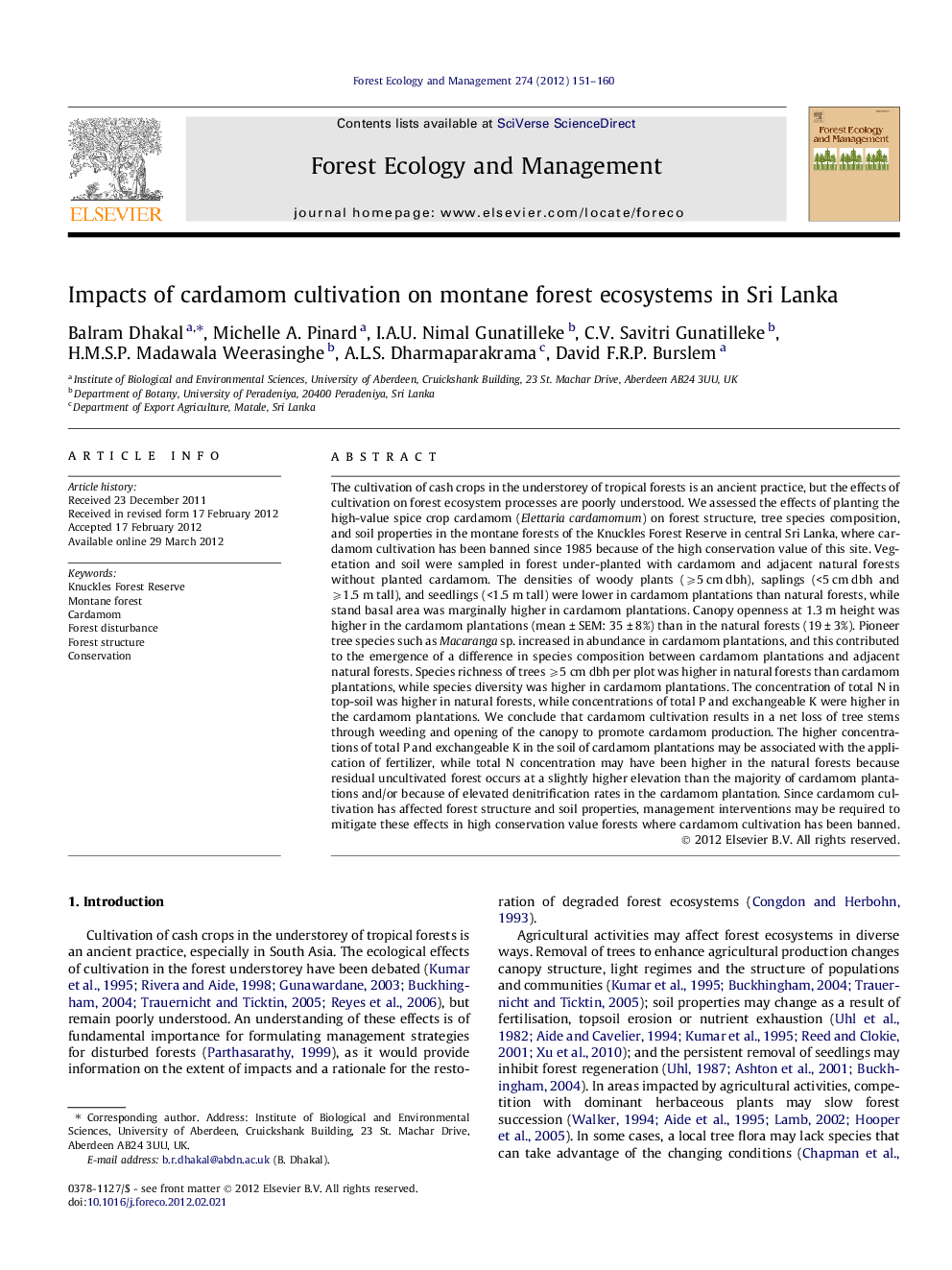| Article ID | Journal | Published Year | Pages | File Type |
|---|---|---|---|---|
| 87180 | Forest Ecology and Management | 2012 | 10 Pages |
The cultivation of cash crops in the understorey of tropical forests is an ancient practice, but the effects of cultivation on forest ecosystem processes are poorly understood. We assessed the effects of planting the high-value spice crop cardamom (Elettaria cardamomum) on forest structure, tree species composition, and soil properties in the montane forests of the Knuckles Forest Reserve in central Sri Lanka, where cardamom cultivation has been banned since 1985 because of the high conservation value of this site. Vegetation and soil were sampled in forest under-planted with cardamom and adjacent natural forests without planted cardamom. The densities of woody plants (⩾5 cm dbh), saplings (<5 cm dbh and ⩾1.5 m tall), and seedlings (<1.5 m tall) were lower in cardamom plantations than natural forests, while stand basal area was marginally higher in cardamom plantations. Canopy openness at 1.3 m height was higher in the cardamom plantations (mean ± SEM: 35 ± 8%) than in the natural forests (19 ± 3%). Pioneer tree species such as Macaranga sp. increased in abundance in cardamom plantations, and this contributed to the emergence of a difference in species composition between cardamom plantations and adjacent natural forests. Species richness of trees ⩾5 cm dbh per plot was higher in natural forests than cardamom plantations, while species diversity was higher in cardamom plantations. The concentration of total N in top-soil was higher in natural forests, while concentrations of total P and exchangeable K were higher in the cardamom plantations. We conclude that cardamom cultivation results in a net loss of tree stems through weeding and opening of the canopy to promote cardamom production. The higher concentrations of total P and exchangeable K in the soil of cardamom plantations may be associated with the application of fertilizer, while total N concentration may have been higher in the natural forests because residual uncultivated forest occurs at a slightly higher elevation than the majority of cardamom plantations and/or because of elevated denitrification rates in the cardamom plantation. Since cardamom cultivation has affected forest structure and soil properties, management interventions may be required to mitigate these effects in high conservation value forests where cardamom cultivation has been banned.
► We investigated the effects of cardamom cultivation on high conservation value montane rain forests in central Sri Lanka. ► The density of trees, saplings and seedlings were lower in abandoned cardamom plantations than adjacent natural forests. ► Cardamom cultivation resulted in a shift in tree species composition with the addition of pioneer species. ► Cultivation increased concentrations of total P and exchangeable K in soil, but lowered total N. ► Cardamom cultivation has persistent impacts on forest that need to be mitigated.
